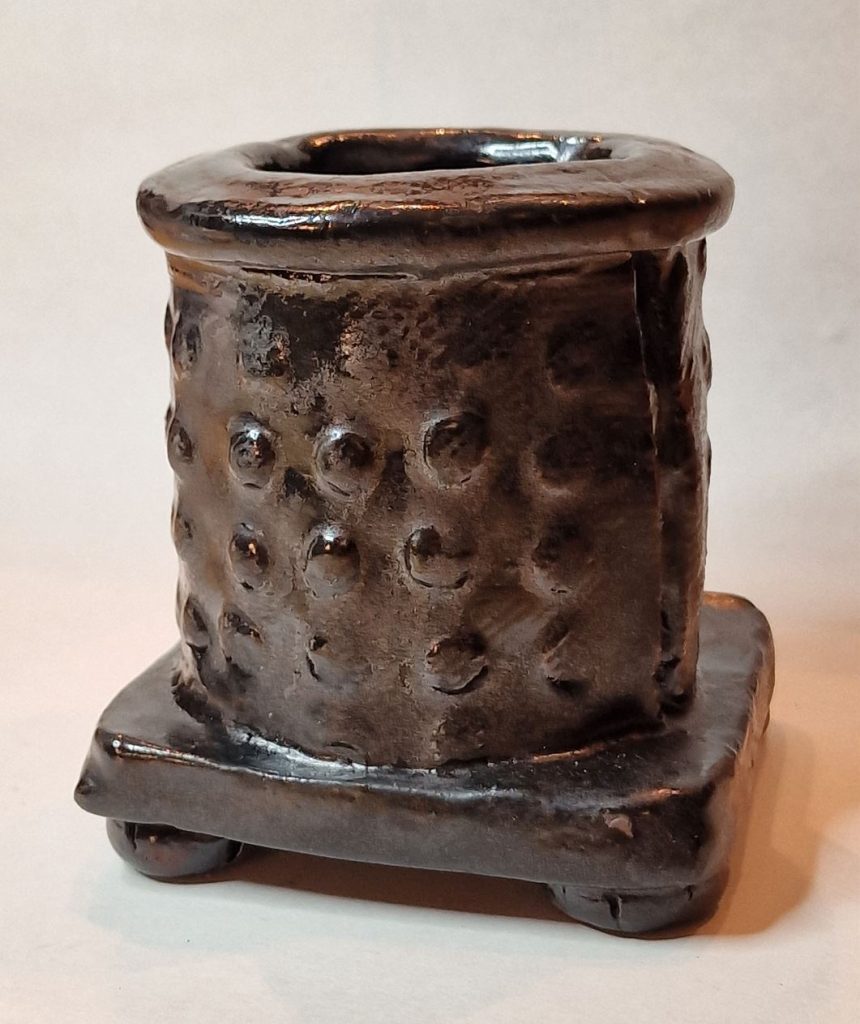
How To Make DIY Pottery Glazes For Wood Firing
“Everyone” wants to sell their products, commercial glazes are an industry like anything else. Sure, you can buy professional glazes made by specialists. But to mix homemade pottery glazes from scratch is not difficult at all. Often, you use twice as many ingredients in your dinner recipe as in most glazes. Mixing glazes from scratch is fun!
What makes a ceramic glaze?
You don’t need to be an expert, but it helps to know some basics. A bonus is that making your own raw-material glaze costs 1/10 of the price of a commercial glaze, it’s creative, and you can make unique and personal glazes.
When you sum up, there are quite few unique ceramic raw materials. Still, they can be mixed in countless combinations, resulting in an endless myriad of different glaze recipes, something ceramists often generously share with others. Ceramics are glazed for aesthetic and decorative reasons, and to make ceramic wares water-tight and food-safe.
Not only the receipt, but also the firing temperature, the kiln atmosphere, the glaze thickness, and many other factors influence the final result.
See the mail page for ceramic glazes here:
https://www.woodfireceramic.com/new-low-fire-ceramic-glaze/
A ceramic glaze is usually a recipe of different types of inorganic materials ground into powder, mixed with water to a creamy consistency, and applied with a brush, dipped, or sprayed on the surface of bisque-fired ceramics. So fired a second time (known as the glaze firing), where the components melt on the ceramics, and transform into a hard and durable coat on top of the ceramic surface.
Developing a food-safe and production-ready glaze can be a lot of work. If that’s your goal, start with a few of the classics; they are well-tested and loved for their appearance. And you can carefully bend them with color Oxides til you find your expression.
More about glazes in Wikipedia: https://en.wikipedia.org/wiki/Ceramic_glaze
"Essentially, glaze is a layer of glass fused to the surface of pottery. It can provide a smooth, hygienic surface that is non-porous whilst at the same time being decorative"
From "Ash Glazes" by Phil Rogers.
The 3 components that make a glaze
- Flux – this is the melting agent
- Glass formers
- Stabilizers
- Colorants
How To Make DIY Pottery Glazes For Wood Firing
The 3 key components that make a glaze:
Fluxes – the melting agent
Flux is the reason why we can sinter clay and melt glazes in a regular kiln; fluxes fuse with other components and lower the melting temperature. Flux often melts poorly on its own, but reacts strongly with other materials. Causes glazes to melt, and clay to sinter at much lower temperatures. A higher amount of flux lowers the melting temperature. 40 – 80% flux is a common percentage in low-fired glazes.
How to make DIY pottery glazes for wood firing:
My list of Fluxing agents for ceramics and ceramic glazes:
1 – Boron(B)
2 – Calcium(Ca)
3 – Feldspar (not a single flux but a family of fluxes)
4 – Lithium(Li)
5 – Magnesium(Mg)
.. – Manganese(Mn) (considered by some more as a colorant)
6 – Potassium(K)
7 – Strontium(Sr)
8 – Sodium(Na)
9 – Zink(Zn)
Read more about these fluxing agents here, and why I chose them as the 9 primary raw-material fluxes for ceramics:
Also, read 9 important fluxes for ceramics (the raw material list):
Glass-former
Glass formers provide structure and stability to the glaze. Silica – Silicon Dioxide SiO2 (usually in the form of flint or quartz) is the primary glass former in most glazes, and contributes to the glassy matrix. The ratio between the glass-former and the fluxes determines (together with the temperature) the viscosity of the glaze melt. A balance between fluxing agents and glass formers is a goal when designing a new glaze.
Stabilizer
Stabilizers help control the thermal expansion and contraction of the glaze during heating and cooling in the ceramic kiln. Stabilizers play a crucial role in ensuring that the glaze adheres to the ceramics. It reduces the risk of crazing (fine cracks in the glaze surface), due to different thermal expansion between the glaze and the ceramics.
Kaolin (clay mineral rich in alumina and silica), Aluminium Oxide, and Bentonite are examples of stabilizers.
Colors
Almost all colors in ceramics are made with one or more metal oxides: Iron Oxide, Cobalt Oxide, Copper Carbonate, Chrome Oxide, and Manganese Dioxide are all examples of much-used colors. More often than not, mixing several Oxides is necessary to give the right color palette and visual effects
Most ceramic colors and fluxes are made of different metal oxides; some colorants can have fluxing characteristics, and some fluxing agents can give coloring effects. Careful consideration of the different components is essential for achieving the desired result.
Commercial Frits and Stains (colorants) can contain more dangerous metal Oxides, but are bound in glass and pulverized, something that makes them less unhealthy to work with.
How to make DIY pottery glazes for wood firing:
Also, see the complete overview of ceramics materials:
https://www.woodfireceramic.com/ceramic-materials-and-glaze-ingredients/
You can also read more on these selected internet resources:
A-Super-Simple-Analogy-to-Help-You-Understand-Glaze-Structure
https://thelittlepotcompany.co.uk/blogs/pottery/making-your-own-pottery-glaze
https://www.oldforgecreations.co.uk/blog/first-five-ingredients-where-to-start-with-glaze-making
“How To Make DIY Pottery Glazes For Wood Firing”. Jan 2025